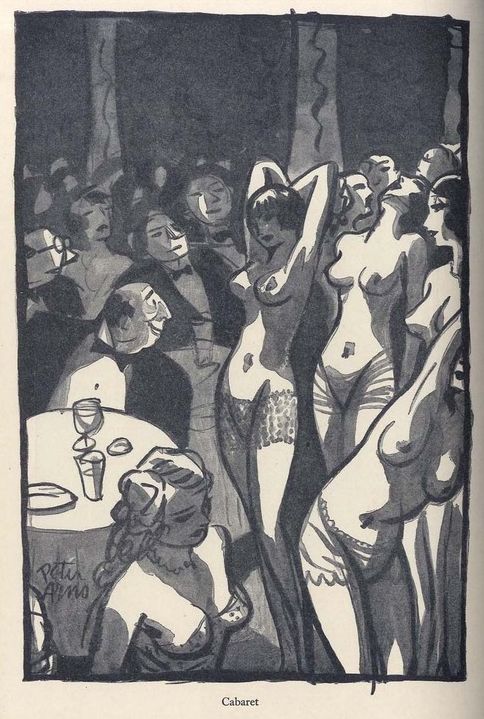ARNO’S “CABARET”
The striking thing about the cartoons of Peter Arno (1904-1968) is their combination of bold formal decision with emotional complexity. His situations are vivid, his characters varied, closely observed, and full of attitude. His pieces are so dramatic because his characters have a pressing stake in the action he depicts.
“Cabaret” is a prime example. The women are your basic gorgeous sex objects, but the gent on the left is not your basic roué. He’s entranced, but observes, as it were, from a great, sad distance. He’s no longer in the game. The other members of the audience watch more tepidly. No one competes with the gent; his eyebrow is where the action is.
Formally, what is striking is that despite its richness, this piece uses only black and white and two grays. Features and outlines and a few major shapes are done in black; a middle gray is added loosely but tellingly for shadows; a darker gray folds the audience back into the far wall.
Arno’s freedom of execution is both glorious and adroit dramatically. The gent’s round table is much too high and not level, but by truncating his torso it presses the eye up toward his face. Details–the glasses on the table, the background faces, the hair and necklace of the foreground woman–are descriptive as narrative elements, but never catchy enough to distract from the main action. Even the framing rectangle is rendered in the same lively manner as the figure outlines, with little irregularities and spillovers here and there.
A strong and wonderfully sophisticated work of art.
(I can’t recollect the source or find a date for this piece.)